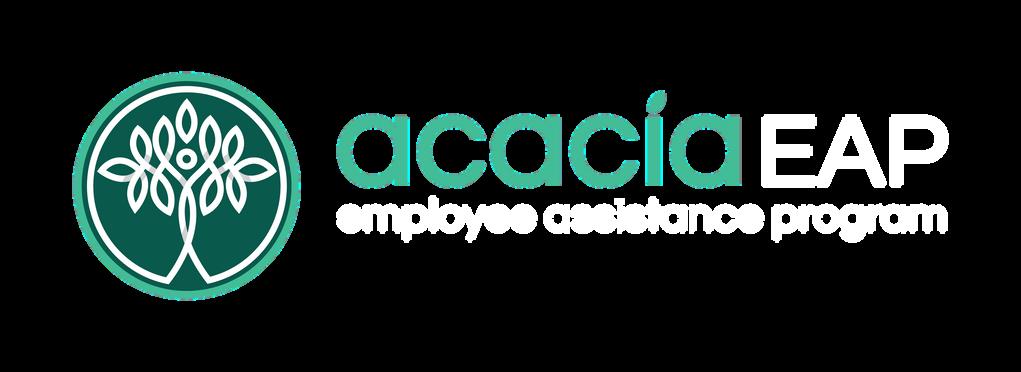Acacia CONNECT

Budgeting
Learn simple budgeting tips you can start implementing to reach your money goals.

AdultADHD
ADHDinadultsisoften underdiagnosedandnot verywellunderstood.
ShiftWork
Copewiththedifficultiesofshiftwork bymanagingsleep,nutrition,selfcare,andrelationships.
FEB 23
E V E R Y C O N N E C T I O N M A T T E R S I S S U E N O 5



F E B R U A R Y 2 0 2 3 | I S S U E 0 5 CONTENTS BUDGETING POSITIVE AGEING Why is budgeting important and how can you start reaching your money goals SHIFT WORK Cope with the difficulties of shift work by managing sleep, nutrition, self-care, and relationships 03 IN CONVERSATION: ANIMAL LOGIC An interview with Animal Logic's Karen Bennett on creating diverse wellbeing initiatives for the workplace, including employee-led programs 27 BEING A MOTIVATOR Motivate the people around you through your actions, attitudes, and behaviour 17 HEALTH ANXIETY Understand the symptoms and experiences of Health Anxiety, previously known as Hypochondria 10 DOWNLOAD MAGAZINE AS PDF SCREEN TIME FOR CHILDREN Learn to create a healthy balance with screen time for both you and your children 13
ADHD in adults is often underdiagnosed and not very well understood
ADULT ADHD
– AUDRE LORDE
"SELF-CARE ISN'T SELF-INDULGENCE, IT IS SELF-PRESERVATION."
FROM THE CEO
REBECCA WEISS CHIEF EXECUTIVE OFFICER

Like many organisations, our team at Acacia has hit the ground running with a busy start to 2023, setting ambitious goals and putting bold plans into motion This year, Acacia has a keen focus on delivering a number of fresh and exciting initiatives, from new products and service offerings to key innovations in the technology space. Keep your eye out for the latest updates in our quarterly magazine, as we share our ongoing journey with you
2022 saw Acacia celebrate its tenth year in operation, which was a great milestone that we shared in Issue Number Two of our magazine As we continue to grow, partnering with organisations and supporting employees as well as the broader community, it is important for us to stay connected to our mission and purpose.
Every Connection Matters is always front of mind for our team and our aim this year is to ensure we embody that value in everything that we do. We look forward to strengthening our connection with each of you this year

02
Understanding and coping with

Shift Work
Shift work – rotating, irregular, evening, afternoon, morning, or split shifts – is seen by some as negative, offering a less-than-optimal lifestyle that can impact our health and relationships Who could blame us; studies have seen higher than normal rates of depression, cardiovascular disease, diabetes, and cancer, as well as an increased risk of divorce

Shift work was once limited to industries that provide essential services, but with more organisations taking advantage of varied working arrangements, more and more employees are experiencing shift work And maybe for the first time
So how can those working outside of the standard nine to five manage the impacts they may experience?
Let’s start by acknowledging that, like most things in life, shift work is not all bad In fact, many individuals will find shift work meets their work/life balance needs You might like the ability to schedule your days and months in advance, the reduced commute times and empty carriages on public transport, the lack of crowds and lines during the day, being able to attend more of your children’s events, and, of course, often better pay
With any type of working arrangement, there can be drawbacks and impacts.
03
Fortunately, we can draw upon science and all those who have gone before to implement practices that support our wellbeing and reduce the potentially adverse impacts of shift work.
Sleep is one of the main predictors of our mental wellness Not getting enough sleep may leave you feeling fatigued, more irritable, and unable to focus and concentrate. It goes without saying that this can place you and those around you at risk
While shift workers are often impacted by irregular sleep patterns, practising good sleep habits can ensure quality sleep. This starts with finding a sleep schedule that works and sticking to it Unfortunately, this often requires tedious trial and error Some people may find it helpful to get three or four hours of sleep after a shift and a couple more before their next one Others will prefer to get it all done in one dose

It is helpful to have certain rituals you do every time before bed, such as reading a book or having a bath This helps train your brain to associate such activities with winding down for sleep Avoid caffeine, alcohol, and nicotine for 4 to 6 hours before falling asleep
Create a relaxing sleep environment by ensuring your bed is comfortable, soothing, and at the right temperature Avoid light and noise as much as possible – black-out curtains, eye masks, and earplugs are all good investments.
Communicate with your housemates, partner, or family about your roster and how this will impact your sleep patterns. It will of course be very tempting to help out around the house, but those around you must respect your need for sleep
Nutrition is another critical aspect of good physical health and plays a key role in fuelling our bodies. Eating a healthy and balanced diet also goes together with maintaining good overall health and wellbeing, as well as being a building block for growth and development, protecting us from disease, and even aiding in mood regulation.
04
Sleep
Sleep is one of the main predictors of mental wellness, so find a sleep schedule that works for you and get the recommended hours of sleep

Self-Care
Supporting our mind through activities we enjoy and find relaxing increases our ability to go about our day with confidence and resolve.
Diet Connection
A healthy diet is critical towards wellbeing, but shift work can disrupt a balanced diet, with convenient choices often having detrimental effects.


Invest time in your connections and relationships by coordinating your calendar and planning quality time in advance.

05
Shift work can significantly disrupt a person’s diet When you start your day closer to dinner time, it can impact your ability to make good choices about food Additionally, if you are sleep deprived, often the last thing on your mind is cooking
Often the easiest and most convenient choices are the ones that have the most negative impact And these are regularly the ones high in fat and sugar, which can impact sleep. You can counteract this by preparing meals before shifts or on your day off.
In much the same way, you may nurture, sustain, and enhance your physical health, you can also support your mind. Self-care is better understood as an investment in yourself that supports your capacity to function and show up for yourself and others
The biggest impact can come from simply coordinating your calendars As soon as you get your work schedule, plan time with your loved ones that works for both of you
There are two types of planned time together that should occur The first is essentially time to reconnect; engage in activities you enjoy, discuss who you are and where you are in life, and share interests once again The second is the necessary conversations, such as dividing up domestic chores, finances, life decisions, etc. Both types of shared time are important, so try not to combine the two too often
There are times when you may feel alone, but there are ways to feel connected to your loved ones outside of physical time.
When we are at our best, physically, mentally, and emotionally, we increase our capacity to go about our day and meet what comes our way with confidence and resolve
Take time and place energy into activities and actions that you enjoy and bring you a sense of rest, relaxation, or revitalisation These can have an instrumental impact on your wellbeing and resilience Self-care is different for everyone – it could be exercising, reading, meditating, or even chatting with a friend. Start to think about what it would look like for you and how you can build this into your day
Your connections with yourself, your partner, and your family serve as the cornerstones of your life; investing time in these connections will support and enrich you each day Alternative schedules don’t have to leave you feeling like ships passing in the night. In fact, there are many ways other ways you can strengthen your connections
Leave them encouraging messages on your fridge door. When possible, call your partner when on a break or text them throughout the day reminding them you are thinking of them
Along this note of planning, prioritise the important events together and learn to say ‘no’ to others
Whilst shift work can seem like a negative, with careful planning and forethought we can mitigate its impacts on our lives. By focusing on our basic needs – sleep, nutrition, mental health, and social connection – we can protect ourselves from the rigours of shift work and ensure any impacts that shift work has on our lives are lessened.

Download Tip Sheet 06
BUD GET ING
Think back to the day you got your first pay slip – it might have been a babysitting job, your first casual or part-time job as a teenager Perhaps it’s the job you’re in now What did you do with it? What were you told to do with it? And how much did you put away for a rainy day?
Pay slips, unfortunately, don’t come with instructions We’re often left to fend for ourselves with what to do, how much to spend, and how much to save.
No one is born with the ability to manage their money effectively, but by the time we become adults, we’re expected to know how This unknowing can create many emotions in us, such as frustration, anger, guilt, shame, disappointment, and even envy

07
But like any skill, managing money can be learned – and it’s never too late to start Managing your money and learning to budget often have immediate benefits Even though you aren’t earning more money, you can use the money you do have more effectively
Before you begin budgeting, it’s important to look at your current money management skills How much effort do you put into budgeting? Do you plan what you spend in a day, a week, or a month? How often do you regret spending money on something?
For many people, the word ‘budget’ evokes anxiety, fear, and frustration But it shouldn't be something that is feared. It’s important to remember that a budget is just a plan for your money, based on what you believe are your money priorities
Reasons to Budget
For most of us, the reason we create a budget is to increase our savings. One of the staples of good budgeting is planning out your savings and paying yourself first This places a higher level of priority on saving money, which can only lead to one thing: a bigger savings account.
Living out of control financially (even a little) can lead to major problems Budgeting can provide some financial control and keeps everything in check. Budgets also allow our financial goals to become clear – it allows us to understand what is realistic to achieve and the timeframe in which we can meet these
Debt can sometimes be difficult to visualise, but a budget can help you understand how much it's actually costing you as well as help you begin to eliminate it
Budgeting can also reduce financial stress. Regardless of if it's from worrying about making your monthly rent payments or mortgage, getting out of debt, or just affording groceries, financial stress can be debilitating. Budgeting, creating a financial plan, and knowing exactly what you can and can’t spend your money on, can help you feel more in control, which, in turn, can reduce a lot of financial stress.
The above are just a few reasons to create a budget, but there may be others you're experiencing
Practical Tips for your Budget

Understanding why you want to create a budget is only the first step How do we create a budget that works for us?
Starting out can be stressful, difficult, and confusing Consider using a budgeting tool There are many online tools, such as Australian Government's Moneysmart Budget Planner. This budgeting tool is great for beginners and lets you work out exactly where your money is going
08
Begin with the most important categories first, and call these your ‘essentials’ Then begin to trim your budget – look back over your costs and find if there is anything you can reduce

If there are certain items that you find yourself spending more than you would like on, use cash. It can help you visualise how much you are paying Consider starting by paying off your debt Even small amounts consistently will help
Remember to set yourself goals. This can be anything big or small, from paying off your debt, reaching a certain amount of savings, or buying a certain item Track your progress and celebrate milestones to keep you motivated.
If you are in a relationship, do your budget together to make it a fun experience
Expect the unexpected. Every pay period will be different, so allow for expenses that might pop up by creating a buffer in your budget
Be content – you likely have more than you need Avoid comparing your situation to anyone else. Lastly, give yourself time. It’s not uncommon to feel like you aren’t getting anywhere your first couple of tries, but hang in there You will get there
If you’re struggling with creating a budget, consider contacting a Financial Coach for support Financial coaching is not just about budgeting either
Not only can it help you get and stay on track with your finances, but financial coaching can also have a raft of personal benefits, from increased peace of mind to decreased stress levels. The flow-on effect of feeling more confident about your money is immense.
Financial coaching may be a service included as a part of your EAP offering You can contact Acacia today to find out more about this service.
09
Buchenau Zach (2018) What Is The Purpose Of A Budget? Cruze, Rachel, (2022), 15 Practical Budgeting Tips mymoneycoach, (2022), 7 Steps to Build a Household Budget | Money Management Strategies
Health Anxiety
WRITTEN BY DAMIET CLAESSENS
From my childhood until early adulthood, I experienced frequent tonsillitis As a child, this caused nothing more than a sore throat and some difficulty swallowing for a few days, which came with the privilege of being given ice blocks
But after picking up the lovely habit of smoking cigarettes as a teenager, the bouts of tonsillitis came to represent much worse Especially at night, without any distractions, my thoughts had free range and the fear took over.
Thoughts like ‘I’ve done it now I’ve given myself throat cancer’ would keep me up until the early hours of the morning
What I was experiencing during those nights was a temporary case of health anxiety –officially known as illness anxiety disorder and previously referred to as hypochondriasis. I was obsessively and disproportionally worrying that the sensations in my throat were signs that something was seriously wrong

Health Anxiety is officially known as Illness Anxiety Disorder, but it may be more commonly known by people by it's previous names, Hypochondriasis or Hypochondria.
10
This is not to say that smoking cigarettes isn’t bad for your health – there are clear links to various types of cancer over time.
But during these nights I couldn’t seem to connect to other available (and more reassuring) information, like how these symptoms in the past never indicated anything more threatening than mild tonsillitis My mind instead clung to the worst possible explanation and held onto this until it was not just a possibility but a sure fact
Lucky for me, these catastrophic thoughts would leave the next morning For some people, however, this worry would not have disappeared, and they may find themselves preoccupied with the idea that they have or will get a serious illness.
When you suffer from persistent health anxiety, much of the following will ring true:
Hypervigilance regarding your health
Prone to feelings of distress about mild or common symptoms
Worries about your health even after a medical ‘all clear’

Distress surrounding health-related media reports
A certain amount of concern about your health is normal and even beneficial; it can prompt us to go for a run, book in for a dentist appointment, or participate in a ‘Dry July’ challenge (or in my case – eventually encourage me to quit smoking) For people with health anxiety though, this concern is out of control
When you experience health anxiety, you may feel unable to stop worrying about your physical wellbeing to the point it becomes exhausting or gets in the way of enjoying life
You might get caught up in online research, monitor yourself for signs of illness, avoid activities causing unpleasant physical sensations (like exercise), or avoid places you associate with getting sick Some people might seek constant reassurance (including medical visits and diagnostic procedures), whereas others might avoid diagnosis due to fear over what they imagine might be found
In
order
to understand health anxiety,
it’s important to be aware of what happens in our bodies when we experience fear. Fear causes the adrenal glands to release cortisol, or the stress hormone, leading to a physical reaction in the body which we label ‘anxiety’
When you experience health anxiety, you may feel unable to stop worrying about your physical wellbeing to the point it becomes exhausting or gets in the way of enjoying life
11
Anxiety manifests itself in a myriad of physical sensations, including nausea, headaches, shortness of breath, increased heart rate, sweating, shaking, and chest pain.
Suppose you are already worried about your health, then start experiencing any of these physical anxiety manifestations in response It’s not unlikely to imagine this creating additional distress They may even cause a vicious cycle where fear creates more physical sensations and physical sensations create more fear
Fortunately, (health) anxiety is very treatable Out of the treatments available, the most common and effective ones are psychoeducation and Cognitive Behaviour Therapy (CBT).
Psychoeducation involves learning about health anxiety, how it develops, and what keeps it going – this article is an example of psychoeducational.

With a professional, you can find out more specifically how health anxiety applies to you This awareness can give you a greater sense of control, thereby improving your wellbeing.
CBT gives you cognitive strategies designed to identify and shift unhelpful ways of thinking In addition, it will equip you with behavioural strategies focused on lessening reassurance seeking and avoidance of certain activities Though avoidance and reassurance seeking can briefly lessen your anxiety, in the long term they prevent you from overcoming your fears, thus keeping anxiety going.
The behavioural strategies in CBT aim to help you stop doing things that make your anxiety worse and start doing things that help increase your confidence and resilience.
Remember, only a qualified health professional can diagnose anxiety If you’re concerned about the way you’ve been feeling, please don’t delay speaking with your regular healthcare provider or ring Acacia to book a session with an EAP Professional
The most common and effective treatments for Health Anxiety are Cognitive Behaviour Therapy and psychoeducation.
12
ScreenTime For Children
As parents, we are living in unprecedented times. Today children have access to technology and information in a way never experienced before With this though, comes new parenting challenges, including the question of whether screen time is a positive or a negative tool for our children.

Unfortunately, there is no easy answer here, as not all screen time is created equal Like most things in life, it’s about finding balance.
The Australian Physical Activity and Sedentary Behaviour Guidelines have set recommendations on screen times for children of all ages. For children younger than two years of age, it’s recommended they are not exposed to any screen time For children between 2 and 5 years of age, no more than 60 minutes per day of screen time, and for those aged 5 to 17 years, no more than 2 hours of screen time.
These guidelines may not fit you and your family, which is okay Remember, the goal is a healthy, balanced relationship with screen time.
Screen time limits aren’t just valuable for children but adults as well Children are always observing and modelling the behaviour of their parents, and it’s important we demonstrate appropriate technology use for our children We can do this by being present with our children – putting our phones aside, turning notifications off, and prioritising time with them.
13 Australian
Government, Department of Health and Aged Care, (2021), Physical activity and exercise guidelines for all Australians
If your time must be disrupted, communicate your choices and actions with your child Not only is this an opportunity to articulate your values and priorities, but it can also support their independent decision-making around screen usage later in life
Continuing this mission of supporting your child’s capacity to self-regulate screen time is the practice of setting family rules around screen time By setting family-based rules, you communicate that monitoring screen time is important, regardless of age. These rules do not need to be framed as time without technology, but rather a time for connecting with self, family, or even community
Of course, in the pursuit of balance, we can’t forget the importance of building in physical activity to counteract our sedentary time – this is time we spend still, like sitting and lying down There is nothing like going on a walk, playing outside, dancing, or whatever activity you enjoy to get you moving (and reduce screen time)

While it is easy to vilify time spent on screens, there are also many benefits. It has great potential and offers opportunities to connect with others, learn and master new skills, and have fun, relax, and unwind It simply requires conscious effort.

For example, you can support your child’s growth and development by talking about the content you are viewing. You can even start looking up facts together about the shows you are watching and learn something new yourself!
If you are feeling unsure whether your child has developed a healthy relationship with screen time, here are a few things to consider Does your child have quality sleep? Enough that supports daily functions? Do they have positive healthy connections with others? Do they engage in regular physical activity and can they regulate their emotions well?

If you found yourself thinking "yes" or "more often than not", it would seem your child is on a positive path

14
Download Tip Sheet
Employees

Employees have access to a suite of confidential support options to support their overall mental health and wellbeing With their choice of delivery model (face-to-face, phone, video, or live chat), employees receive support that best meets their needs.
Confidential EAP counselling Nutritional Support
Leaders
Legal Referral Financial Coaching
Leaders play a vital role in taking care of the psychological safety of their people They have the capacity to sustain the welfare of their staff, by minimising mental health stigma and encouraging employees to seek early support

Manager Support Hotline Manager Check In
Organisations
Manager Referral Critical Incident Support
Acacia provides organisations with a range of wellbeing initatives they can utilise to ensure their people are supported and they are creating a mentally healthy workplace.




EAP@Work™
Mediations
Reflective Practice in Supervision Workshops and Training
Career Transition
Leadership Coaching
Psychological Wellbeing Checks
Supportive Transitions
Psychological Fitness for Work Assessments
15
ALL MARCH
Melanoma March
MARCH 1
Zero Discrimination Day

MARCH 3
Employee Appreciation Day
MARCH 8
International Women's Day
MARCH 16
National Close the Gap Day
MARCH 17
World Sleep Day
MARCH 19
International Day Against Bullying and Violence
MARCH 20
International Day of Happiness
MARCH 21
International Day for the Elimination of Racial Discrimination
MARCH 21
Harmony Day
MARCH 30
World Bipolar Day
APRIL 2
World Autism Day
APRIL 7
World Health Day
APRIL 14
International Moment of Laughter Day
APRIL 22
World Earth Day
APRIL 24 – 30

World Immunisation Day
ALL MAY Mindfulness May
ALL MAY Domestic and Family Violence Prevention Month
MAY 15 – 21


National Volunteer Week
MAY 24
World Schizophrenia Awareness Day

MAY 26
National Sorry Day
MAY 27 – JUNE 3
Reconciliation Week
16
Motivation is the driving force for action; it is the process that starts, guides, and maintains behaviours related to a goal Put simply, motivation is one of the core reasons why we do anything at all When we can harness and maintain motivation, we are more likely to engage in healthy behaviours, feel a stronger sense of control, avoid unhealthy coping mechanisms, and overall, improve our happiness and wellbeing
It's not difficult to recall a time in our lives when our motivation was lacking, or when we desperately needed a boost to achieve a goal In these moments, we likely began searching for a combination of intrinsic and extrinsic motivators to get us back on track.
When hearing the word intrinsic, think internal; intrinsic motivation refers to engaging in a task or activity purely for the satisfaction and enjoyment that one gets from it. Extrinsic motivators, on the other hand, are the external rewards that generate motivation, like praise or a type of reward


You might be quite in tune with generating motivation for yourself But what about motivating those around us? What impacts can our actions, attitudes, and behaviours have on others?
Motivating others can play a significant part in having positive experiences or successful outcomes in core areas of life Think of how difficult even the simplest of tasks can be if you are required to pull someone along who doesn’t want to help

17
There is no magic spell that allows us to step into the minds of others, discover what drives them, and take control However, there are some valuable approaches that we can utilise to generate motivation.

Lead By Example
When considering the first step in motivating others, one does not need to venture much further than their own attitudes and behaviours. As the famous quote goes, ‘be the change you wish to see in the world’ Your character, reputation, and actions work to inspire those around you and allow you to offer guidance from a more solid position.
Think of a time when you’ve been inspired by others and how much that lifted you up Alternatively, a time when you were asked to do something by someone you felt wasn't pulling their weight It soon becomes clear why the power of our actions should not be underestimated
Active Listening
Actively listening to those we are trying to motivate can be one of the most effective strategies to understand how they operate and what they are experiencing No one knows more about a person's struggles, concerns, barriers, passions, and needs than themselves
Active listening involves more than just hearing what someone is saying. It is a conscious process of giving your full attention to an individual – put down your phone or step away from your computer, maintain good eye contact, and engage in encouraging verbal and nonverbal feedback.
In doing so, you allow the person to feel respected, safe, valued, and understood, and gain a wealth of knowledge about their experiences and how you may support or motivate them

18
DON'T QUIT
Ask the Right Questions
When you ask better questions, you get better answers This is the general premise that underlies the need to not only actively listen, but actively engage in furthering the conversation
Asking open-ended questions across several areas in a person’s life can be an effective way to improve motivation for many reasons, the first of which is connection.
Showing genuine interest in learning more about someone’s home life, work life, hobbies, and interests is a great step in strengthening a relationship. This, in turn, can lift mood and boost overall engagement
The second benefit is that it gives insight into the individual nature of the person themselves Are they someone who engages in team sports and likes a competitive environment? Or are they more introverted and prefer to partake in tasks simply because it brings them joy?
This information is key and will allow you to adjust your approach to better align with their personality type, and ultimately support them to succeed.

Adapt Your Style
You have actively listened and asked opened-ended questions. Now it’s time to utilise what you have learned to ensure your interactions make them feel comfortable, supported, and, of course, motivated
19
Take into consideration whether the individual is someone who is intrinsically or extrinsically motivated Do they prefer to work autonomously or have check-ins at specified stages? Would they rather have goals and a clear structure, or are they fine working in a loose setting?

Essentially, take what you have learned about the individual to understand what kind of environment will allow them to succeed – and figure out what role you can play in creating this It could even be seen as an opportunity for selfdevelopment if there are areas where you lack knowledge and need to upskill in order to support them as best you can
Check In and Offer Support
Once all of this new knowledge has been gained, it may be assumed that the work is done and solid structures are now set in place, but unfortunately, that's not the case.
From week to week, day to day, or even hour to hour, human beings are constantly impacted by the world around them. The person feeling motivated and energised last week may now feel flat and lethargic For this reason, regularly checking in and offering support and assistance, adjusting your approach to certain situations, can be vital for maintaining motivation in others.
When people gain motivation, a spark is ignited within them to believe in themselves and live the life they want. This spark then becomes an attribute noted by others, and is seen as an inspiration for them to find motivation within themselves again From there, a continuous domino effect of spreading motivation has begun.
Download Tip Sheet
20
Attention Deficit Hyperactivity Disorder, or ADHD, is a common neurodevelopmental disorder that, until recently, was thought to primarily impact children, with individuals outgrowing it during adolescence and adulthood We now know this isn’t the case –research shows between 30 to 60 percent of children impacted by ADHD continue to display symptoms into adulthood.
ADHD continues to be underdiagnosed, particularly in adults. Part of the reason is that the symptoms experienced in children often diminish as the brain matures and our executive functioning fully develops Adults, therefore, have a greater ability to exercise self-control and often experience fewer hyperactivity symptoms. Adults also often learn strategies to manage the challenges they experienced as a child, meaning symptoms can become less noticeable and impactful
Symptoms may only become apparent in adulthood during life changes, like a new job or moving out of home, or when an individual is experiencing less structure and more stress, like becoming a parent. In fact, many adults only realise they have ADHD when their children are diagnosed and they learn more about the symptoms
But what is Adult ADHD? Adult ADHD is characterised by difficulties with attention, concentration, impulse control, and sometimes hyperactivity, which affect a person’s daily functioning.
It is known to impair activity in four areas of the brain: the frontal cortex, which is responsible for attention, planning, self-control, and organisation; the limbic system, which regulates emotions and attention; the basal ganglia, which can result in inattention and impulsivity when impaired; and the reticular activating system, which affects focus and regulates sleep patterns


While some symptoms may reflect those in children, adults with ADHD often present and experience symptoms differently.

21
Both at home and in the workplace, adults with ADHD can find it difficult to pay attention to the task at hand, which may lead to challenges with following directions and remembering what has been said. They also experience difficulties prioritising, focusing on, and completing tasks (particularly those they find boring) They also may hyper-focus on tasks they find stimulating or rewarding, leading to forgetting others that may be more important

Adults with ADHD may also make mistakes at work that others consider careless, like missing or overlooking important details and misplacing objects. Difficulties sitting still and fidgeting are also common symptoms. Poor organisation and planning skills, sleep difficulties, and racing thoughts are also common for adults with ADHD
Realising you have ADHD as an adult can often trigger feelings of relief and even hope, particularly for those undiagnosed and untreated as a child Often when ADHD is only realised in adulthood, it’s likely you have been called forgetful, inconsiderate, or even lazy. This feedback may have caused a negative view of yourself, lowered self-esteem, and a level of frustration and stress
Understanding ADHD and how it presents in your life can help you to develop personalised and practical strategies to manage it. A simple strategy might be to decrease distractions in your environment. This may mean decluttering your workspace, putting your phone away from arm's reach, or even limiting the number of internet tabs open on your computer
Utilising time management and organisation strategies can also be helpful Create a short to-do list with only urgent and important tasks or consider using a diary to set visual reminders for tasks that need to be done.
Breaking down big tasks into smaller pieces can ensure you don't feel overwhelmed and make you feel organised
Lastly, seeking help and treatment options to better manage the impact of ADHD can also be a helpful strategy
There are a number of treatment options that have shown positive outcomes for adults with ADHD These include medical management, such as with medication, as well as counselling support, such as cognitive behavioural therapy Current evidence recommends medication combined with psychological therapy
If you are having challenges with focus and concentration and they are significantly impacting your daily life, you can speak to an EAP Professional to explore further options You can also contact your GP to assess if ADHD or another health issue might be accounting for your symptoms Receiving treatment for ADHD often requires a proper diagnosis, and your GP may refer you to a psychiatrist or psychologist for an assessment if necessary.
22
Positive ageing is a term used to describe the process of maintaining a positive attitude, feeling good about yourself, keeping fit and healthy, and engaging fully in life as you age Ageing is often associated with many rewarding experiences, but it’s also a time of significant change, including within your physical functioning, social networks, and employment. Keeping a positive attitude toward ageing is particularly important as it allows us to continue to feel good and have a sense of control as we face another part of life.
P o s i t i v e A g e i n g
As people age, it is natural for them to move in and out of periods of positive ageing

There are many common challenges experienced by older people. These include difficulties centring around health and fitness, social networks and activities, financial security, and an increased reliance on others.

How we manage, think, and cope with these challenges can affect how well we cope with getting older

23
There are a number of ways to prevent, delay, or manage some of the physical, psychological, social, and personal challenges people face as they age
Social interaction is associated with positive ageing and feeling optimistic about life. Maintaining social networks through club memberships, engaging in voluntary work, and keeping in touch with family encourages interaction with others, prevents isolation, and promotes good mental health and physical activity.
Keeping the brain active, alert, and flexible can promote good mental health and positive ageing. Having an active mind can be as simple as reading a book, learning a new hobby, or doing the daily crossword
People with fewer medical conditions have a better quality of life, better mental health, and are less restricted in their daily activities. Attending regular medical check-ups and engaging in illness prevention (e g , not smoking) can reduce the risk of on-set chronic conditions
Regular physical activity is vital for improved health and wellbeing It is never too late to get moving Exercise is a great way to maintain good health, help you think positively, recover from illness, and reduce the risk of disease. Strength training is especially beneficial as we age It can help to build and maintain healthy bones, muscles, and joints This can, in turn, increase physical strength, and improve balance and mobility.
Many older people find part-time employment or voluntary work rewarding and a chance to give something back to the community.
Any type of work can help to keep your mind sharp and can provide a social network outside of the home and family
Stress is a natural part of life While a little stress can be beneficial, too much can become unhealthy Stress can be caused by everyday hassles, or it can result from stressors as you age, such as difficult relationships, adjusting to retirement, financial concerns, or chronic illness High levels of stress can produce emotional, behavioural, and even physical symptoms.
It can also impair the immune system and increase the risk of physical and mental health problems Keeping as free from stress as possible, and learning how to effectively cope with unavoidable stress, can promote positive ageing in all areas of your life
If you are feeling stressed or concerned about ageing, Acacia is always here to assist in any way we can Reach out to us to discuss accessing counselling support from one of our experienced EAP professionals


24
Acacia understands the difficulty in reaching out in times of need, especially when your concerns require additional, specialist support This is why we provide our clients with direct access to Acacia's services through dedicated specialist connect lines, in addition to our standard 24/7 line


Although many challenges faced by these individuals are often not isolated to their specialist needs, Acacia understands the importance of providing a safe connection where all people are welcome and accepted for who they are.
These connect lines provide another safe point of connection for clients They remove the pressure of self-disclosing the reason for access and provide an opportunity to engage in an open discussion around topics they may feel otherwise uncomfortable raising Our connect lines also ensure individuals have access to EAP Professionals who are highly experienced with their specialist needs.
25
DOMESTIC & FAMILY VIOLENCE (DFV) CONNECT LINE

1800 879 163
Acacia's DFV Connect Line provides individuals affected by DFV with professionals that have expertise in supporting those affected by DFV This support is available to all individuals who have been impacted by violence and abuse, as well as users of violence and abuse, regardless of the individual's age, gender, sexuality, ethnicity, religion, or relationship status
LGBTIQA+ CONNECT LINE
1300 214 958
Acacia's LGBTIQA+ Connect Line is designed to support people who identify as lesbian, gay, bisexual, transgender, intersex, queer, asexual, and other sexually or gender diverse. Individuals can receive support from EAP Professionals who have self-identified as part of the LGBTIQA+ community or who are highly experienced in supporting members of this community.

FIRST NATIONS CONNECT LINE
1300 520 373
Our First Nations Connect Line provides individuals with culturally sensitive and informed support. We recognise the importance of First Nation individuals having the option to receive counselling and support from an Aboriginal or Torres Strait Islander EAP Professional or one with cultural awareness training and extensive experience with First Nation individuals

26
In Conversation With


27
An Interview with Karen Bennett Head of Human Resources
“In our strategy, there are companyled activities thought of by our managers and our HR team, but there are also employee-led activities We really embrace employees coming up with activities that help with their wellness.”

Karen Bennett is the Global Head of Human Resources for Animal Logic, an Australian animation and visual effect studio known for feature films such as Happy Feet, The Lego Movie, and Peter Rabbit For the past eight years, she has worked with her team to define a wellness strategy that reflects their workplace culture, the key to which is company-led and employee-led programs
“Wellness@Animal – the name of our wellbeing program – has a goal of creating a culture of wellness ”
Like many organisations, Animal Logic takes a holistic approach to its wellness program Their threestreamed approach looks towards supporting employees’ minds, bodies, and souls.

Not only is their approach a proactive one, but it also allows for a range of diverse activities that recognises all the ways wellness can impact the health of an individual Some programs are those developed by the company itself, seen in many organisations these days.
“We celebrate mental health week in October through many different mental health activities that raise awareness, and have different educational seminars and activities We do STEPtember We have fortnightly Wellness@Animal emails to keep tips about wellness top of mind.”
And of course, their EAP services, which are available through Acacia “I’ve been in talent management for a long time, and to me, having an EAP offering to employees is just a threshold service that employers offer to their employees ”
Animal Logic’s EAP offering includes access to EAP@Work™, a program that brings EAP counselling into the workplace
Karen Bennett
28
Onsite programs like EAP@Work™ reduce stigma and normalise access to mental health and wellbeing services. Introduced at Animal Logic pre-COVID, the program originally had considerable traction, but was abruptly paused once work-from-home orders came into place But Karen and her team were determined to continue the program virtually, and connected with Acacia to develop an offering bespoke to their employees
“We wanted to make it different to the typical counselling that someone might engage through Acacia on their own To make it more about the maintenance of resilience ”
Although their employees have since returned to the workplace, their virtual EAP@Work™ program has continued It has now evolved into a 30-minute, proactive service offering where employees can talk through anything that is currently frustrating or overwhelming

"Some people think they need to be suffering with something really big in order to engage in standard EAP.
“But EAP@Work™ can just be something that’s frustrating you at the moment; take half an hour to talk to someone who can get you over the bump you’re feeling ”
Although company-led programs like EAP are essential to any organisation’s wellbeing strategy, Animal Logic’s wellness offering also includes what Karen calls ‘employeeled’ programs These are their voluntary initiatives founded by their employees

initiatives such as life drawing, soccer club, and chess club
“We have a film club, which is a combination of company-led and employee-led We have a particular employee who is incredibly passionate about film, so we show one every two weeks, open to everyone in the office ”
29
–
Karen also attributes workplace mental health champions as an essential part of the wellness program. “There isn’t really anything better than for employees to see themselves in somebody else ”

Animal Logic is finding considerable success with the program; Karen says she doesn’t experience barriers or issues, which she attributes to the nature of their employee-led initiatives and the flexibility of changing programs
“With such a large variety of programs, not everything is going to appeal to everyone, meaning sometimes activities naturally expire
Through their yearly engagement Survey, Animal Logic receive anecdotal feedback which continues to shape their understanding in what activities are popular and what aren’t Delivered through Culture Amp, voluntary questions provide employees with the opportunity to give feedback on absolutely anything and everything in their workplace Last year, Animal Logic included further questions around diversity – gender identity, parents and carers’ responsibilities, mental health diagnoses, and neurodiversity
“It helps us understand who we have working for us that identify as living with those aspects, so we can continue to support them. It also gives you the argument to continue to support them ”
For example, with a comparatively young workforce, organisations may want to incorporate programs and intiatives targted towards younger individuals

“You want employees that feel that they’re at the best They feel engaged in work and in life They feel healthy in work and life And they’re enjoying work and life. As a company, our role is to support that ”

"This isn’t a barrier though, but continuous evolvement and improvement.”
30



Gabrielle Cramond Tender & Content Writer Acacia EAP Tyson Breslin-Field Business Operations Manager Acacia EAP Rebecca Weiss Chief Executive Officer Acacia EAP Suzanne Osbourne Clinical Services Manager Acacia EAP Lisa Lemme Senior Psychologist Acacia EAP Damiet Claessens EAP Clinician Acacia EAP Riley Whyte EAP Clinician Acacia EAP Karen Bennett Head of Human Resources Animal Logic C O N T R I B U T O R S Acacia CONNECT Copyright © Acacia Connection Pty Ltd, all rights reserved CALL SMS NZ WEB 1300 364 273 0401 33 77 11 0800 000 657 acaciaconnection.com Download Magazine as PDF



































































